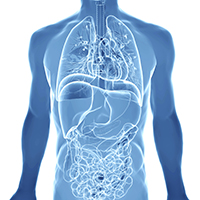 As nanomedicines are utilised for chronic conditions, questions are being raised about “where materials go and how they leave the body during long-term exposure”, says Professor Steve Rannard
As nanomedicines are utilised for chronic conditions, questions are being raised about “where materials go and how they leave the body during long-term exposure”, says Professor Steve Rannard
The University of Liverpool has been awarded £2 million to become a leading centre in the UK for tracking the fate in the body of materials used in breakthrough medicines.
Researchers will be using radioactive labelling to find out where key materials used in nanomedicines go once the medicines have entered the body.
Accumulation of carrier materials
Nanomedicines are a relatively new class of therapy which can deliver small quantities of a drug in a targeted way to the affected part of the body. Unlike traditional therapies, nanomedicines are formulated to use lower quantities, with the potential for cost savings, fewer side-effects and more rapid treatment of disease.
Part of nanomedicine formulations involve the use of polymers or other materials which help the drug reach its target, but until now there has been little research into where the carrier materials accumulate, despite them often making up over half of the mass of the medicine.
Chemist, Professor Steve Rannard, said: “Nanomedicines have been used widely in cancer treatment where side-effects are often weighed against the short time span of treatment and the urgency of the condition.
“However they are now being increasingly studied for chronic conditions where treatment can go on for decades. This raises questions about where materials go and how they leave the body during long-term exposure.”
The multi-disciplinary team includes Professor Andrew Owen and Dr Marco Siccardi from the Department of Molecular and Clinical Pharmacology and Dr Tom McDonald and Dr Dave Adams from the Department of Chemistry.
Andrew Owen, a Professor in the Department of Molecular and Clinical Pharmacology and Chair of the British Society for Nanomedicine said “Understanding the distribution of all components of a nanomedicine is critical for a robust assessment of therapeutic benefit and for an early indication of the potential for off-target toxicity.
“The research will inform development of safer and more efficacious medicines that utilise nanotechnology to overcome drug delivery issues.”
More research, greater understanding
The funding allowing the facility to be created, provided by the EPSRC, University of Liverpool and industry, will also allow researchers and pharmaceutical companies to access the facilities within the lab to aid their specific developments as well as supporting ongoing work at Liverpool where new nanomedicine options for HIV are being developed.
Professor Rannard said: “There is no other facility in the UK like this, but with the market for nanomedicine now in the multiple billions of dollars, there is a need for more research and greater understanding
“Nanomedicines are going to increasingly improve future medicines for a broader range of conditions, and this work will provide important information that may accelerate the process of getting them into the clinic and provide benefits to patients globally.”
